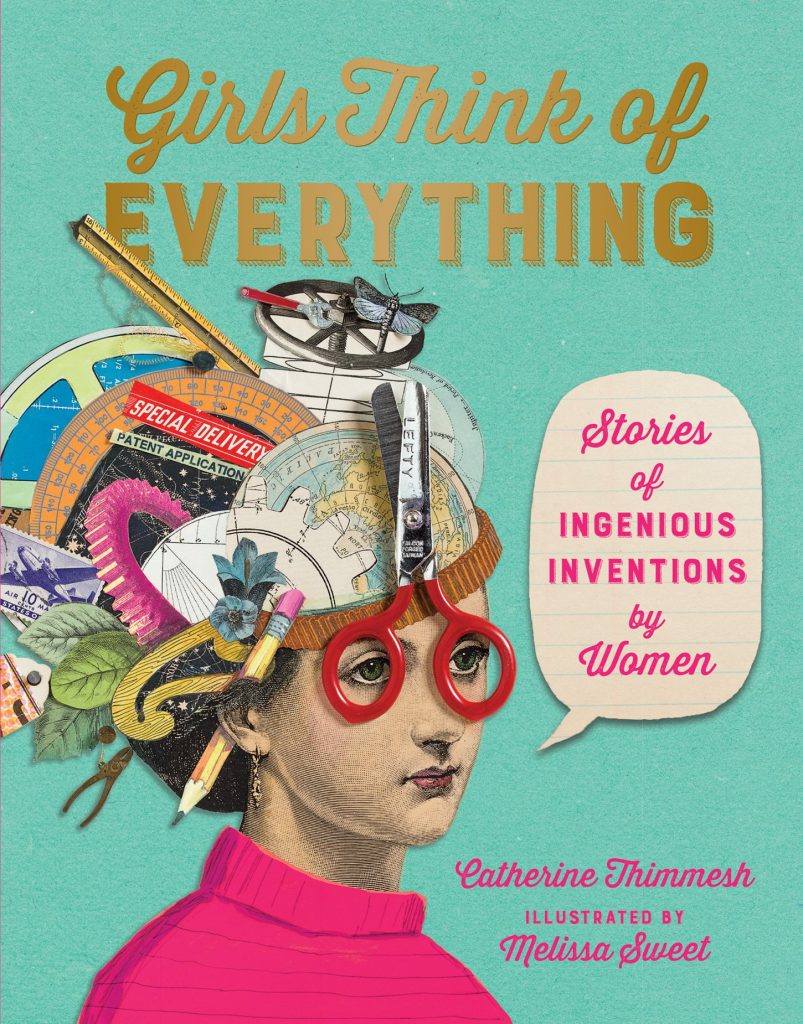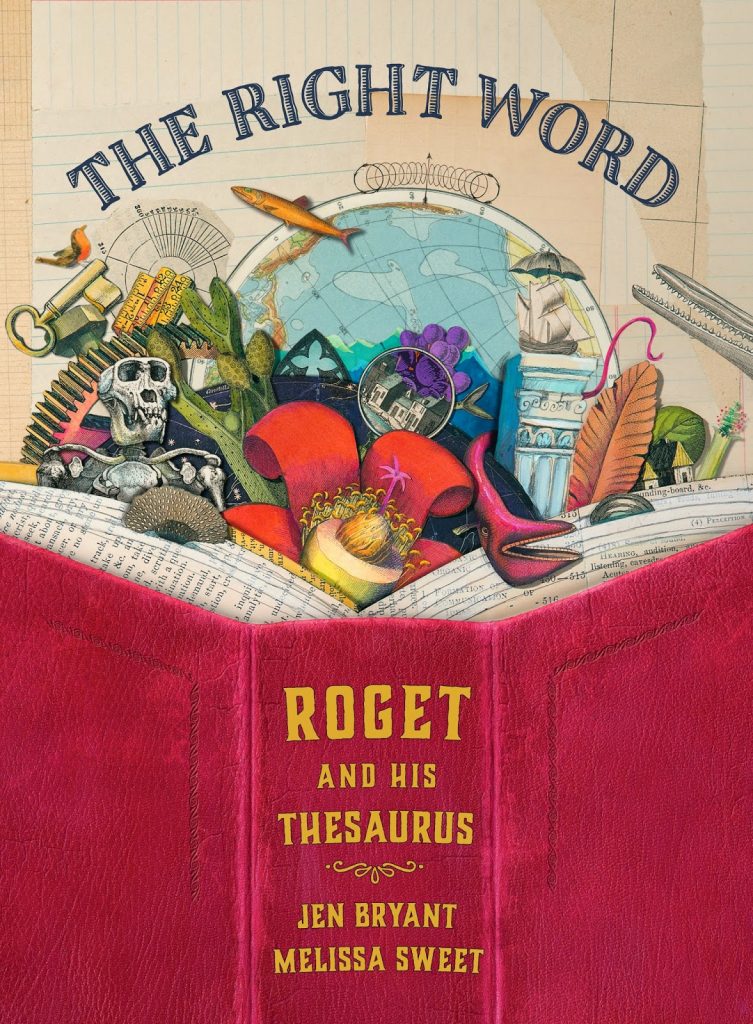
BIBLIOGRAPHY
Thimmesh, Catherine, and Melissa Sweet (illustrator). Girls Think of Everything: Stories of Ingenious Inventions by Women. New York: Houghton Mifflin Harcourt, 2018. ISBN 9781328772534
PLOT SUMMARY
Girls Think of Everything is an informational book dedicated to girls and inventions from around the world. The book begins with end pages that introduce famous women inventors from the pre-1800s to 2018. Next comes the table of contents and an introduction to women inventors of yesteryear, of modern times, and of the future, followed by in-depth studies of 15 famous women inventors that have changed the world. Among them are Azza Abdelhamid Faiad, a teenager living in Egypt with ideas for eliminating plastic waste; Ann Moore, a former Peace Corps pediatric nurse who designed an ingenious baby carrier; and Grace Murray Hopper, a mathematician who helped to create the first universal computer language. Thimmesh finishes the book with a section titled “Your Turn,” with resources for kids and teens interested in creating inventions of their own. The book also includes bibliographic sources, a glossary of terms, and an index.
CRITICAL ANALYSIS
Girls Think of Everything is a well-crafted informational book and in its show of diversity, the book shines especially brightly. From chocolate chip cookies to waterproof solar lanterns; from KwaZulu-Natal, South Africa, to Albuquerque, New Mexico; and from well-established professionals to high-schoolers and college students, this book is a fantastic showcase of women inventors and inventions of all kinds. Middle-grade and teenage readers will appreciate the diversity of inventions, races, and age groups of the inventors, especially the four high school inventors included in this updated second edition. Readers will also be inspired by the “Your Turn” section in the back of the book, which provides resources to learn more about the patent process and the programs and contests available to young inventors on an international level.
The book’s organization is good, for the most part. Girls Think of Everything includes a top notch timeline, table of contents, introduction, select bibliography, glossary, and index—each a valuable research tool for its middle-grade audience, especially the inventors-in-training among them. However, the lack of order for Thimmesh’s 15 invention stories (chronological, alphabetical, or otherwise) is puzzling, especially since the book begins with end pages displaying a chronological timeline of women inventors. The pink side blurbs that accompany each invention are also problematic. While the extra information is fun to read, it always pops up mid-story when readers are still trying to engage with the main text, thus distracting from rather than enhancing the main text.
But despite some design flaws, Thimmesh’s stories create interest and enthusiasm about each unique invention and inventor, inspiring readers to create inventions of their own. Especially exceptional entries included those of Grace Murray Hopper, a woman with a can-do attitude and a love for mathematical code; Trisha Prabhu, a teen who heard about the harmful effects of cyberbullying and felt compelled to take a stand; and the inventing duo Anna Stork and Andrea Sreshta, two college students who wanted to help those effected by the devastating earthquake that hit Haiti in 2010. Girls Think of Everything offers a fascinating look at woman inventors and, despite its imperfections, deserves a space on the middle-grade STEAM shelf.
AWARDS AND REVIEW EXCERPTS
From School Library Journal: “This updated edition of the 2000 collective biography showcases greater diversity in its representation of women inventors. . . . Expanded resources for aspiring scientists and a time line that emphasizes more recent inventions are welcome changes. . . . In a growing marketplace of works about women transforming the world, this title holds its own.”
From Horn Book: “Today’s readers will find a laudable increase in the subjects’ diversity as well as a more contemporary focus. . . . A resource as informative as it is empowering.”
CONNECTIONS
- Using Girls Think of Everything, share the four stories of high-schoolers and their inventions. Then ask middle-graders to think of a problem they’d like to solve and invite them to come up with a prototype for an invention to solve it.
- Divide middle-schoolers into groups and invite them to pick one inventor from Girls Think of Everything to study and research together. Then ask each group to present to the other groups about the inventor they researched.
- Read about Ruth Wakefield, the inventor of the chocolate chip cookie. Then present children with the ingredients for cookies and allow them to choose an unconventional (but safe) ingredient to add to the cookies. Create a name for the cookies and, if possible, allow children to taste the cookies they’ve invented.
- Read a few stories from Girls Think of Everything. Then read a bio of Catherine Thimmesh and set out some of her other books for children to browse such as the following:
- Thimmesh, Catherine. Team Moon: How 400,000 People Landed Apollo 11 on the Moon. ISBN 9780618507573
- Thimmesh, Catherine. Lucy Long Ago: Uncovering the Mystery of Where We Came From. ISBN 9780547051994
- Thimmesh, Catherine. Team Panda: Helping Cubs Return to the Wild. ISBN 9780544818910
*Note—This book review was created as an assignment for a course at Texas Woman’s University.
